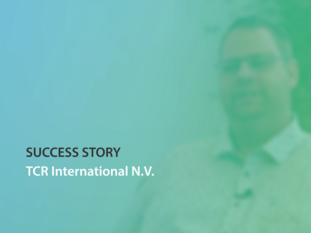4 minutes09/07/2016
Written by Timo Kronlöf
In my opinion, the field of occupational safety has been quite conservative and controversial. I’ve seen collisions between operative and occupational safety goals too many times and the winner has more often been operative goals. It’s usual to resist new occupational safety related work just by stating:
'We’ve tested that 10 years ago. And it didn’t work'
'Safety is high priority but we need to get this work done first'
Whatever the excuses have been, we occupational safety pros should have taken it more seriously. We need to understand why even our best people feel that occupational safety is not number 1 priority. Why do they use shortcuts and don’t go by the occupational safety book? Why do people feel that safety is a negative thing or at least something that takes too much effort compared to the added value it brings.
The simple answer is that we are human. It’s natural to feel that more regulated work is not a positive thing. Fortunately, it is the same natural feeling of laziness that makes us improve. Tackling the issue is a huge challenge for occupational safety management but also for the technology teams that are working to activate people to use a occupational safety solution.
Biggest challenge, people engagement
I’d argue that the biggest challenge to improve safety culture is how to get more people involved in occupational safety. In a longer run it means we need to make occupational safety more engaging and take actions to deregulate work. I’ve seen that with regulations and sanctions it is possible to get a fairly good level in occupational safety. Yet, the best occupational safety performers use far more tools than different levels of ‘stick’. Carrots and positive way is gaining more space as the occupational safety culture evolves.
Improving the overall attitude towards safety will make people value safety more without the need for extensive punishments and control. To do that we need more motivational approach than we used to have. Good safety culture and performance should be made an issue to be proud of. Let me give some examples how you can move forward.
From negative to positive indicators
Occupational safety indicators such as accident frequency and cost of accidents are negative just like many audits and safety rounds that we conduct. We predominantly seek things that are not by the book or like audit finds, we call them non-conformances. This echoed on every level. If we track negative issues it’s natural to use the stick and give punishments from bad behavior.
In turn, if we would measure more positive things and success factors it would be easier to use the carrot and shift focus towards recognition and rewards. Many leading companies have already introduced occupational safety initiative programs that are focusing on the positive things such as active occupational safety reporting or good housekeeping. Problems arise when we start thinking about recognition rewards. What would be a motivational reward? How to purchase and deliver them? Gift cards, lunch or cinema tickets are typical but I’ve also seen well-functioning reward systems that are integrated in occupational safety goals and monthly salary. Main success factors are that the reward system is transparent, prompt and well informed across the organization.
Harnessing the technology
Technology won’t solve all your occupational safety issues automatically. However, technology can make a huge difference in people involvement and their activity in occupational safety. If conducting a risk assessment takes you 5 min you can expect more assessments than if it takes 60 min. That’s for sure. The same goes with any occupational safety related tasks. That means one of EHS department’s main objectives should be reducing the time required to occupational safety reporting.
Main motivational issue to get people involved is feedback. If people get fast feedback and things start happening quickly after someone has reported a near-miss there’s a good possibility to boost the involvement. EHS department should put an effort to develop the reporting and feedback process as smooth as possible. Getting rid of the papers and introducing mobile tools will help with this one.
Make it social
Feedback from the company and foremen is essential but even more interesting possibility is feedback from peers. Perhaps we could use the ideas that social media have introduced, sharing content. Occupational safety management could learn from social media how to make safety information more transparent, more interesting and more personal. We are not forced to follow our friends, peers or interesting people in social media, but we are at some level forced to read occupational safety letters. That small difference is the key to make occupational safety more engaging. Start creating interesting occupational safety information that people want to follow, comment and like.
Take the first step
Start moving towards more positive occupational safety by boosting your occupational safety initiative program. Use more carrot than stick. Make occupational safety easier for your people and provide better ways to give feedback and share occupational safety content. With time, you will get more people involved and more active occupational safety culture in your organization.



